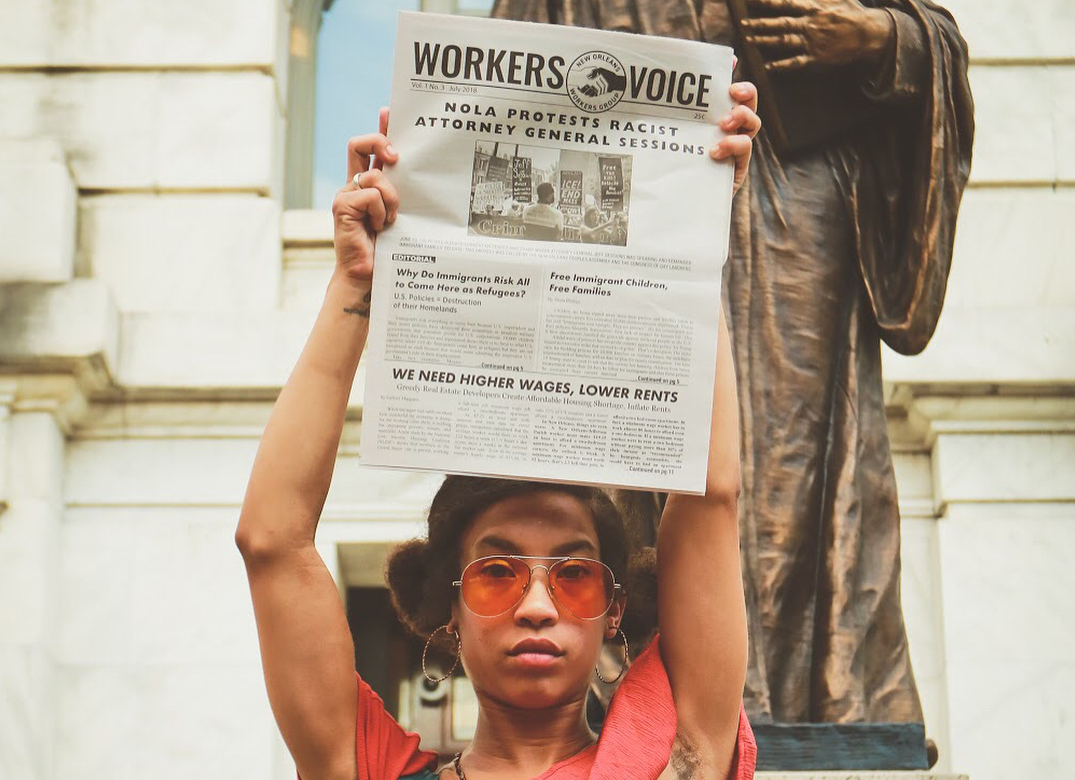By Tina Orlandini
Mayor Cantrell and City Council have been going back and forth with Orleans Parish Prison about a plan to build a separate wing of the city jail to house inmates with mental illnesses using funding from FEMA.
But this will only mean increased incarceration with new beds opening to be filled with poor and working people of the Parish. Mentally ill people should not be in prison. The New Orleans Prison Reform Coalition is putting pressure on Cantrell and Councilmembers to halt the jail expansion and reduce the city’s incarceration rate. However, the city remains uncommitted to care for the mentally ill. Mental illness is a disease—not a crime—and needs to be treated medically.
The Unites States incarcerates more people than any country in the world, including the inhumane caging of people in need of mental healthcare.
According to the National Alliance on Mental Illness (NAMI), approximately 20 percent of state prisoners and 21 percent of jailed prisoners have “a recent history” of mental illness. Nearly 70 percent of young people in the juvenile justice system have at least one mental health condition and approximately 20 percent have a serious mental health illness. NAMI reports that between 25 and 40 percent of all Americans living with mental illness will spend time in jail or in prison at some point in their lives.
Given the disparities in race and class within the prison system, and its lineage to slavery as a mechanism for upholding the capitalist state, it should come as no surprise that the majority of those incarcerated are people of color, poor whites, and/or members of the LGBTQ community.
Mentally ill people are forced into the streets
In 1963, a bill named the Community Mental Health Act called to shift mental health care from asylums and state hospitals to community-based mental health centers. But before it was passed, the bill was gutted, removing all funding for personnel and leaving money only for buildings. By the 1980s, this policy was completely failing mentally ill patients. “States proved more enthusiastic about emptying the old facilities than about providing new ones” (Chicago Tribute, 1989).
In 1980, the Mental Health Systems Act granted direct support to community mental health centers, but this support was quickly repealed with the arrival of the Reagan administration which cut federal mental health funding by one-third (The Atlantic, “America’s Largest Mental Hospital Is A Jail”). The demise of mental health infrastructure, coupled with the parallel defunding of public housing and other social services, has brought us to where we are today: the caging of the mentally ill in jails and prisons.
Prisoners get torture instead of treatment
Approximately 80 percent of people incarcerated under Louisiana DOC have substance abuse problems according to VOTE (Voice of the Experienced) Deputy Director Bruce Reilly and Dr. Anjali Niyogi, who co-wrote a column for the Advocate last month. The piece explained, “There are FDA-approved drugs proven to help people overcome opioid addiction, and yet these drugs are not made available to them.” Instead, they reported that the DOC had authorized the profiteering healthcare company BioCorRx to perform experiments on inmates for the non-FDA approved implant, Naltrexone.
In Alabama, the state was given a strict deadline in May to make improvements to its prison system after atrocious photos were released documenting the inhumane conditions in its prisons in violation of the 8th Amendment, which is meant to prohibit cruel and unusual punishment. Alabama prisons have reported the highest suicide rates in the country and often mentally ill inmates, including those on suicide watch, are subjected to the cruel torture of solitary confinement. Some Alabama prisoners are shackled to toilets for 5 days as punishment.
Abolish the U.S. prison system
Examining the prison system from the perspective of mental health care simply deepens what we already know—behind the prison walls is torture, exploited labor, and experimentation. For those who can’t find or afford mental health support, it is a pit to fall into and crawl out of, only to fall back in. For these reasons and many more, we call for the abolition of the U.S. prison system!

